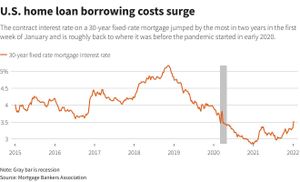A significant increase in wheat prices is expected to take center stage in 2024, causing ripples across global food markets. Economic analysts warn of rising costs for consumers and farmers alike as various factors converge to push up prices.
The causes of this price surge stem from several intertwined issues. According to the Food and Agriculture Organization, adverse weather patterns have drastically affected wheat production, particularly in key exporting nations like Ukraine and Russia. These regions have faced unusual droughts and floods, impacting the quantity and quality of harvests. This situation has led to the projection of lower global wheat stock levels entering 2024, driving prices higher.
"This is the worst situation we have seen for wheat production in years," stated Dr. Emily Johnson, senior agricultural economist at AgriMarket Research. "Farmers from major producing regions are struggling with crop yields, and we simply cannot meet the increasing global demand at current production levels." Reported by Bloomberg, the forecasts indicate wheat prices could rise by 25% compared to previous years.
Supply chain disruptions also contribute significantly to the rising wheat prices. The pandemic-induced logistic bottlenecks and increased transportation costs have made it harder for wheat to reach international markets. Shipping rates have surged, making previously manageable export operations economically unviable.
"Even as production issues are resolved, transporting grain remains costly, and these expenses are passed directly to consumers," said Mark O'Brien, market analyst with Global Agri Solutions. "We may see bread prices soar by the end of the year if trends continue."
According to the latest reports from the U.S. Department of Agriculture, the country is anticipated to see wheat prices reaching upward of $7.50 per bushel, which could lead to the highest prices seen since 2012. These market dynamics highlight the precarious situation for food supplies globally and raise concerns about the long-term viability of wheat demand versus supply.
The repercussions of increasing wheat prices extend beyond immediate consumer costs. Countries like Egypt, which heavily rely on wheat imports, are expected to face economic pressures. "Our budget is heavily tied to the import costs of wheat, and any significant increase presents major challenges," admitted Ahmed Saleh, the finance minister of Egypt, to Reuters. He noted the substantial impacts on food security and the potential for increasing poverty levels if prices surge unchecked.
Farmers are also feeling the pressure. Many are grappling with increased production costs as they invest more heavily in irrigation and fertilizers to offset low yields. There are calls for urgency from agricultural leaders scrubbing policy plans to provide relief to farmers, ensuring they can produce wheat sustainably.
"We are at a crossroads," remarked Dan Thompson, spokesperson for the National Farmers Union. "Investment and support mechanisms throughout the supply chain must be addressed immediately for us to weather this storm. We need more than just temporary fixes; we require long-term strategies to stabilize production."
Rising interest rates and economic uncertainty are complicators. While higher wheat prices could benefit domestic producers, the resulting impacts on consumer spending and broader economic health are significant. For the average consumer, escalated wheat prices translate directly to rising costs of everyday staples—from bread to pasta, making it imperative for households to adjust their budgets accordingly.
Global efforts are underway to address this situation. Nations and international organizations are encouraging sustainable farming practices to improve yields, alongside promoting diversified crop production strategies to lessen reliance on wheat. "Investing in technology and crop science could revolutionize how we grow our food and mitigate these price hikes for the future," suggested Dr. Johnson.
Many countries are also considering strategic stockpiling of wheat to buffer against extreme market fluctuations. This kind of proactive measure draws from historical strategies following past global crises. These initiatives shed light on the need for unprecedented cooperation within the agricultural community to tackle forthcoming challenges effectively.
With market observers stressing the urgency of addressing agricultural concerns, the spotlight is firmly positioned on policymakers worldwide. The track of prices for wheat heading toward 2024 will not only be determined by the balance of supply and demand, but also by the actions taken today. While experts expect volatile prices to dominate discussions, the actual impact on consumers and farmers remains to be seen.
This multifaceted issue stresses the interconnectedness of agriculture, economics, and policy, and highlights the complex interplay of various global forces shaping food prices. The agricultural sector's ability to respond will play a pivotal role in ensuring food security as we slip inevitably closer to 2024 and beyond, where rising wheat prices could rapidly redefine our economic environment.



